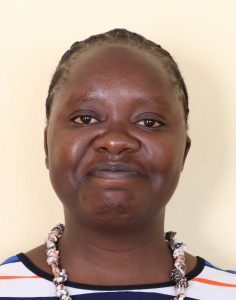"It is tiresome and very cumbersome to carry water every day to school," reflected Moses, a student at Itieng'ere Primary School.
Moses is 1 of 354 students and 16 teachers and staff who report to school at Itieng'ere every day. Awaiting them each morning is the school's severe water crisis, which requires learners to start their day by carrying water from home to school.
The current required volume of water each student is expected to bring is 20 liters - a large and heavy amount when walking long distances, not to mention while also carrying school books. Some students choose smaller containers to bring to school, either because their parents refuse to give up a larger jerrycan for the day or because they cannot physically manage the larger jerrycan's weight. Most containers students use to carry water are very dirty, inside and out, contaminating any water they hold.
The only water storage on school grounds is a tiny plastic rain tank, which quickly runs out after the rains. When the water students bring in the morning also runs out each day, they have to leave class to fetch more water. Sometimes multiple students will try to fetch water from their classmates' homes nearest to school, putting a strain on those families' home water supply. These mid-day trips to fetch water interrupt students' lessons and drain their focus and energy. The students' academic performance is, as a result, lagging.
"Sometimes I have to forego my lessons so that the learners can go and bring water to be used at school," said teacher Levi Wandera.
Because water is combined for use at school, even one dirty source puts the entire school population at risk of water-related illnesses. Students report stomach upsets due to the water they drink at school. Some have even been diagnosed with typhoid and amoeba due to consuming the dirty school water. These illnesses take students out of school to seek treatment, draining their families of their financial resources and setting them further back in their studies.
What We Can Do:
Rain Tank
A 75,000-liter rainwater catchment tank will help alleviate the water crisis at this school. The school will help collect the needed construction materials such as sand, bricks, rocks, and water for mixing cement. We will complement their materials by providing an expert team of artisans, tools, hardware, and the guttering system. Once finished, this tank will store rainwater that the school’s students and staff will use for drinking, handwashing, cooking, cleaning, and much more.
The school and we strongly believe that all of these components will work together to improve standards at this school, which will help lead to better student academic performance and unlock the potential for these students to live better, healthier lives.
Handwashing Stations
There is currently nowhere for students to wash their hands after using the latrines or before eating lunch, let alone the water.
The student health club will oversee the two new handwashing stations we will provide and ensure they are kept clean and in working condition. The club leaders will fill the handwashing stations with water daily and make sure they are always supplied with a cleaning agent such as soap or ash.
VIP Latrines
Two triple-door latrine blocks will be constructed with local materials that the school will help gather. Three doors will serve the girls, and three doors will serve the boys. These new latrines will have cement floors designed to be easy to use and clean. And with a rain tank right on school property, there should be enough water to keep them clean.
Training on Health, Hygiene, COVID-19, and More
We will hold a one-day intensive training session with students, teachers, and parents. This training will cover a wide range of topics, including COVID-19 symptoms, transmission routes and prevention; personal and environmental hygiene; and the operation and maintenance of the rain tank, latrines, and handwashing stations. There will be a special emphasis on handwashing.
Our team of facilitators will use various methods to train, including participatory hygiene and sanitation transformation and asset-based community development. We will initiate a student health club, which will prepare students to lead other pupils into healthy habits at school and home. We will also lead lectures, group discussions and provide illustrative handouts to teach health topics and promote good hygiene practices within the school, including handwashing and water treatment. We will then conduct a series of follow-up training before transitioning to our regularly scheduled support visits throughout the year.

 Rainwater Catchment
Rainwater Catchment
 Rehabilitation Project
Rehabilitation Project







































